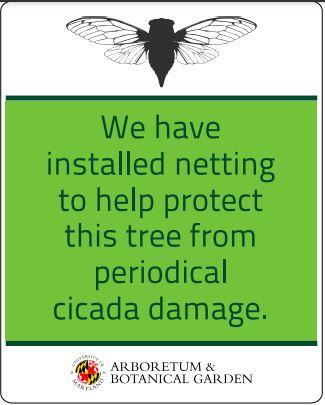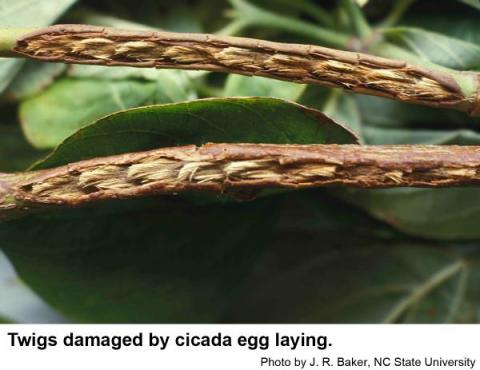
Lawnmower? Chainsaw? Incoming biplane? Space Godzilla vs. Mothra? Nope, that’s just the sound of the periodical cicada singing its little heart out. This spring, we will witness the emergence of Brood X and every tree, plant, picnic table, lawn, and flagpole in the area has the potential to be covered with these large, but unaggressive and interesting insects.
For anyone who wasn’t in the area 17 years ago, or for those of you who were and have just blocked out the memory, let’s quickly review. The cicadas emerging from the ground this spring are specifically “periodical cicadas” and are different from the annual cicadas that we are more familiar with. Periodical cicadas spend most of their life underground, feeding on root xylem and then emerging en masse every 17 years to molt, mature, and mate.
We will see this start to happen in mid-May and into June with the development of mud tunnels or mounds in the ground, especially under trees, which are the escape hatches of the insects. Millions upon millions - as many as 1.5 million per acre - will emerge at the same time in an interesting evolutionary survival technique called “predator satiation”. Put simply, there are so many available for predators to eat at once that they will be too full to eat all of them and with so many out at once, the survivors will easily find one another to mate and continue the family line.
While the emergence can seem like something of a horror movie and make your skin crawl, the insects generally don’t harm humans beyond the unpleasant surprise of having one fly into your face. The damage they do inflict is on young trees, when the females make an incision in the bark of a small branch and deposit their eggs. This incision can disrupt the xylem and phloem processes, provide an entry for pathogens and pests, and also cause structural damage and branch breakage due to the added weight of the eggs, in some cases. The damage can also be significant enough to kill especially vulnerable trees.

Photo by J.R. Baker, NC State University
While there is no way to stop the cicadas from emerging, nor would we want to, there are things we can do on campus to support our tree canopy. Step one is identifying our most vulnerable trees using our GIS tree inventory. Then, following the recommendations of Dr. Mike Raupp, University of Maryland Extension Specialist, Professor Emeritus of Entomology at the University of Maryland, and Fellow of the Entomological Society of America, we will be using netting to physically block access to the trees. Dr. Raupp recommends an appropriately sized net of no larger than 1cm mesh. Insecticides have not been found to be as effective in controlling cicada damage as netting and moreover, using netting instead of pesticides aligns more closely with the Arboretum’s and the University’s sustainability goals. The nets will allow the trees to continue to photosynthesize and will allow smaller insects to access the trees. We will also be sure to inspect for bird nests prior to installing the nets. The nets will stay up until the mating season is over and then they will be removed. As Professor Raupp says, this will be an incredible teaching opportunity for the public on these fascinating insects!
Written by Meg Smolinski, Outreach Coordinator, University of Maryland Arboretum & Botanical Gardens and ISA-Certified Arborist
